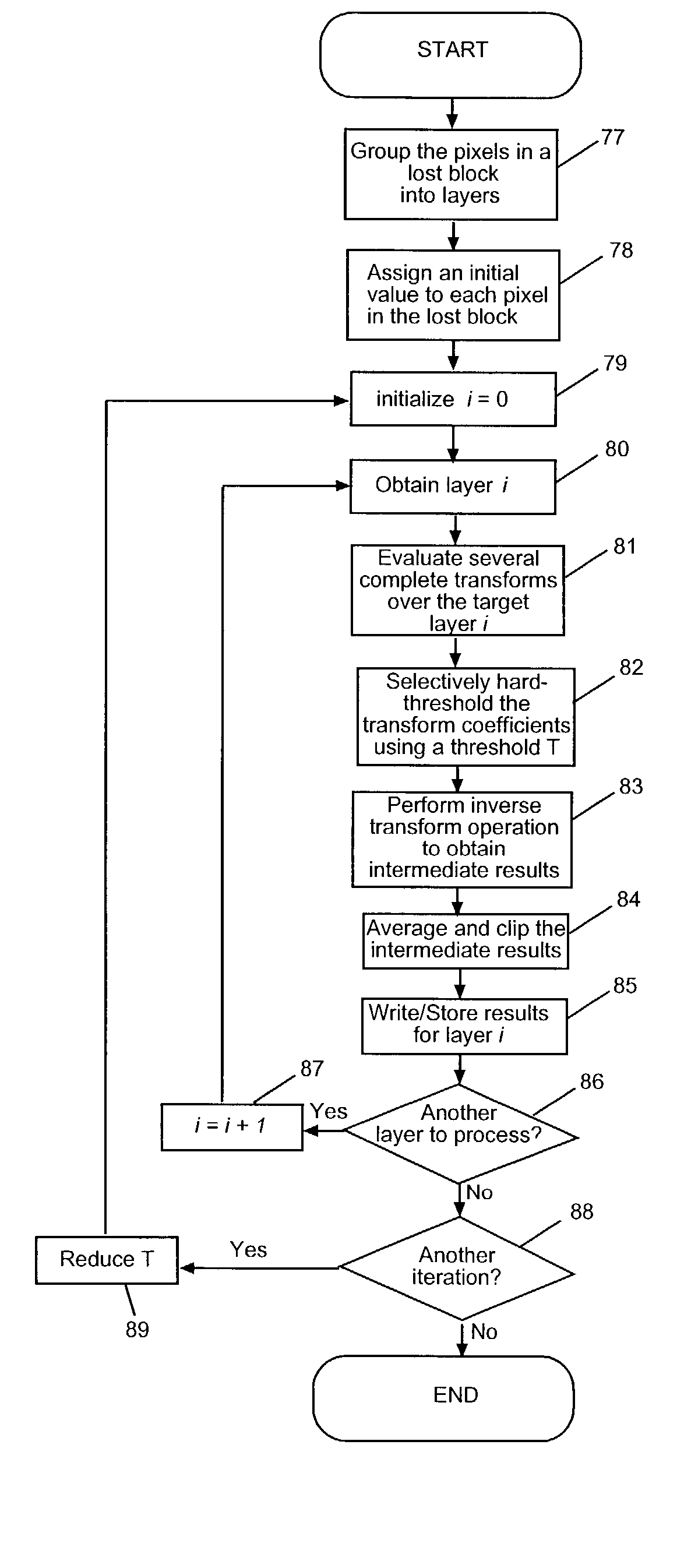Iterated de-noising for image recovery
a technology of image recovery and image enhancement, applied in image enhancement, instruments, television systems, etc., can solve the problems of recursive image recovery and error concealment algorithms, limited robustness and/or adaptability,
- Summary
- Abstract
- Description
- Claims
- Application Information
AI Technical Summary
Benefits of technology
Problems solved by technology
Method used
Image
Examples
Embodiment Construction
A. Overview
[0026]The image / video-frame recovery algorithms of the present invention are primarily concerned with the recovery of lost data using spatial prediction alone. As such, for video, the techniques of the algorithms are directly applicable in cases in which temporal prediction is either not possible or not prudent, for example, in cases involving severely corrupted motion vectors and / or intra-marked macroblocks in the popular MPEG algorithms. While the algorithms of the present invention are primarily concerned with the recovery of completely lost image / video-frame blocks, the algorithms are not so limited. Rather, the algorithms can be adapted to situations in which partial information is available and the lost data corresponds to non-rectangular or irregularly shaped regions. The algorithms are particularly useful for robust recovery of image / video-frame blocks that contain textures, edges, and other features that pose problems for current methods. While the algorithms tak...
PUM
 Login to View More
Login to View More Abstract
Description
Claims
Application Information
 Login to View More
Login to View More - R&D
- Intellectual Property
- Life Sciences
- Materials
- Tech Scout
- Unparalleled Data Quality
- Higher Quality Content
- 60% Fewer Hallucinations
Browse by: Latest US Patents, China's latest patents, Technical Efficacy Thesaurus, Application Domain, Technology Topic, Popular Technical Reports.
© 2025 PatSnap. All rights reserved.Legal|Privacy policy|Modern Slavery Act Transparency Statement|Sitemap|About US| Contact US: help@patsnap.com



